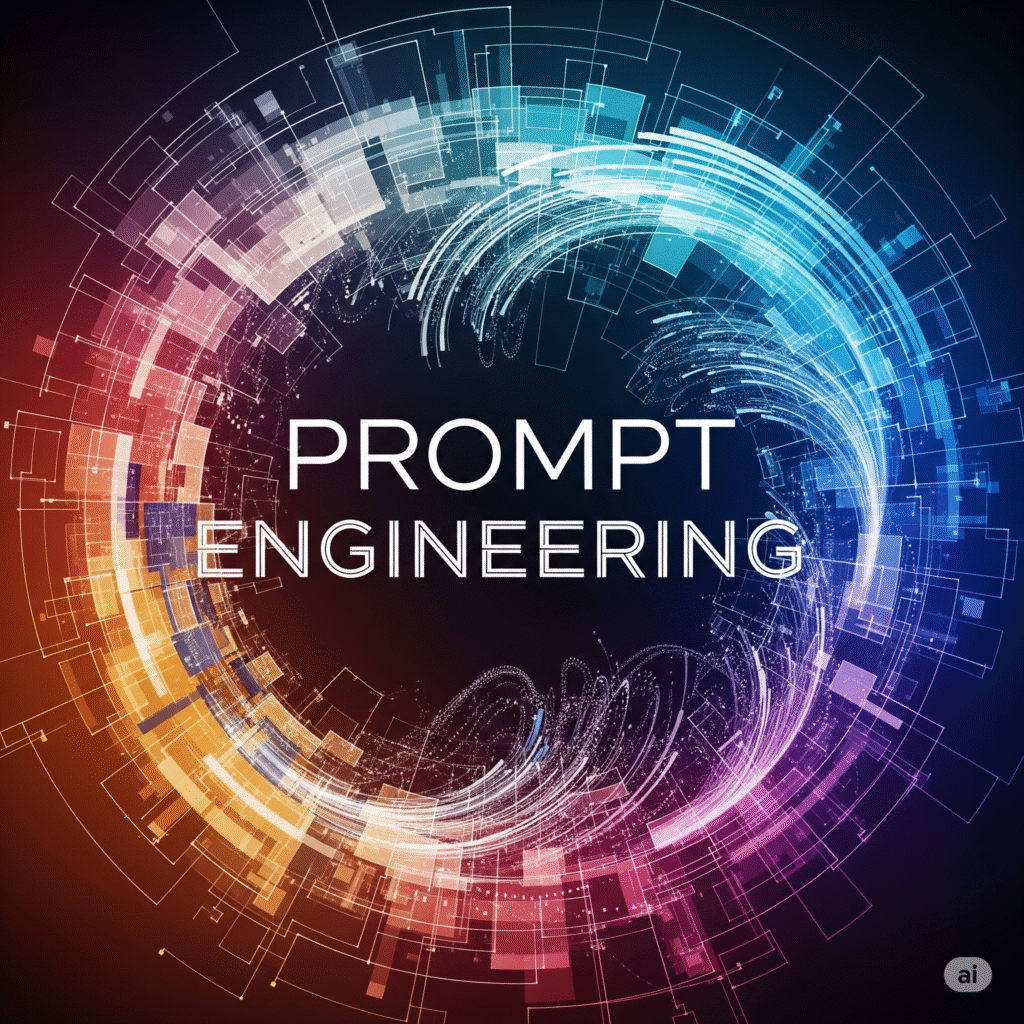Introduction
In the rapidly evolving world of artificial intelligence (AI), a new field has emerged as both an art and a science—Prompt Engineering. As generative AI systems like ChatGPT, Claude, and Gemini become mainstream, the ability to communicate effectively with these tools has created a unique niche of expertise. Whether you’re generating content, code, summaries, designs, or decisions, crafting the right prompt is essential for getting the most relevant and accurate output. This is the essence of prompt engineering.
This blog explores what prompt engineering is, why it’s important, the salary expectations in this emerging field, how it connects to jobs across industries, and the core skills and best practices needed to excel.
What Is Prompt Engineering?
At its core, prompt engineering is the practice of designing and refining inputs to large language models (LLMs) or other generative AI tools to achieve desired outputs. It involves framing queries in a way that maximizes clarity, precision, and contextual relevance.
Imagine working with a highly intelligent but literal assistant. If you give it vague or poorly structured instructions, the output might be subpar or even misleading. On the other hand, a well-structured prompt—tailored to the assistant’s understanding—can produce content that is creative, insightful, and actionable. Prompt engineering makes this happen.
Prompts can be as simple as a question or as complex as a multi-step task, including role-based instructions, tone guidelines, and output formatting. For example, a prompt for a blog writer AI might include target keywords, audience demographic, preferred tone (e.g., professional or conversational), word count, and desired call to action.
In short, prompt engineering is not just about asking questions—it’s about guiding AI behavior through strategic instruction.

Why Is Prompt Engineering Important?
Unlocking AI’s True Potential
AI tools are only as effective as the instructions they are given. Poor prompts lead to vague, inaccurate, or incomplete outputs. In business, this can mean flawed decisions, poor customer experiences, or wasted time. Prompt engineering ensures you’re speaking the “language” of AI clearly—leading to reliable, contextually accurate responses.
Increasing Efficiency Across Functions
Well-engineered prompts can streamline workflows in content creation, customer service, research, marketing, software development, and even legal or medical fields. Instead of spending hours rewriting or fixing outputs, prompt engineers get high-quality results the first time. This dramatically boosts productivity.
Minimizing Risk and Bias
Prompt engineering helps in designing queries that guide AI away from biased, inappropriate, or hallucinated content. With the right structure and constraints, prompt engineers can reduce the risk of AI generating misinformation or unethical responses. This is especially crucial in sensitive domains like healthcare, finance, education, or policy.
Bridging the Gap Between Humans and Machines
Not everyone is a programmer, and AI tools are increasingly used by people from diverse backgrounds. Prompt engineering enables non-technical users to harness advanced AI capabilities, making technology more accessible and useful across professions.
The Rise of Prompt Engineering Jobs
A New Category of AI Talent
As organizations race to adopt AI, many have realized that they need more than just data scientists and developers. They need professionals who understand how to interact with generative models effectively—enter the prompt engineer.
Prompt engineering jobs are now emerging across sectors, including tech startups, digital marketing agencies, media companies, financial firms, consultancies, and educational institutions. Titles may vary—Prompt Engineer, AI Prompt Specialist, Generative AI Designer—but the role is fundamentally about optimizing human–AI interactions.
Industries Hiring Prompt Engineers
Prompt engineers are being hired in a wide variety of industries:
- Technology and SaaS companies use them to improve AI product interfaces and workflows.
- Marketing and advertising firms rely on prompt engineers to generate SEO-optimized content and ad copy.
- E-commerce brands use prompt engineering for chatbot automation and product descriptions.
- Healthcare and finance sectors need professionals to construct precise prompts for regulated AI use cases.
- Education providers hire them to build AI-assisted learning content, tutoring bots, and academic research support tools.
Even government and non-profits are beginning to explore how prompt engineering can aid in data transparency, digital communication, and public service delivery.
Prompt Engineering Salary: What Can You Expect to Earn?
Prompt engineering is a lucrative field, particularly because it blends soft skills (like communication and critical thinking) with emerging technical knowledge. Salaries can vary based on geography, experience, and the complexity of AI tools involved.
Entry-Level Salaries
At the entry level, especially in content or marketing roles, prompt engineering professionals can expect salaries in the range of $60,000 to $90,000 per year in the United States. In countries like India, the equivalent starting salary could be around ₹10–18 lakhs per annum, especially in Tier-1 cities and tech hubs.
Mid-Level and Specialized Roles
Professionals with more experience or technical specialization (e.g., prompt engineers working on code generation or model evaluation) can command salaries between $100,000 and $200,000 per year. Some companies pay premium rates for hybrid roles that combine prompt engineering with product management, AI safety, or UX design.
High-End Opportunities
Top-tier prompt engineers working with elite AI companies or on mission-critical systems have reported compensation packages in the range of $250,000 to $350,000 annually. These roles often involve managing large-scale deployments, training junior engineers, and contributing to the design of new AI prompting frameworks.
Essential Skills for Prompt Engineers
1. Language and Instructional Design
Clarity in communication is foundational. Prompt engineers must craft questions and instructions that are clear, specific, and structured. This often involves understanding grammar, syntax, semantics, and tone.
2. Contextual Thinking
Understanding the user’s intent and aligning it with the AI’s capabilities is key. Prompt engineers must be able to anticipate possible responses and structure prompts to narrow the model’s focus appropriately.
3. Iterative Testing and Refinement
Prompting is often an iterative process. You try different variations, evaluate the outputs, and refine your instructions. Strong analytical and evaluation skills are necessary to recognize when a prompt needs improvement and how to enhance it.
4. Familiarity with AI Tools
While prompt engineers don’t always need to know how to code, familiarity with AI platforms (such as ChatGPT, Claude, Gemini, Midjourney, etc.) and basic understanding of concepts like tokens, temperature, and embeddings is important.
5. Creativity and Domain Knowledge
Creativity helps when crafting unique or brand-consistent outputs. Domain knowledge adds precision to the prompt, especially in technical or regulated industries.
Best Practices in Prompt Engineering
1. Start With Clear Objectives
Before writing a prompt, define what you want the AI to do. Are you asking it to write an article, summarize a report, generate ideas, or simulate a customer conversation? A clear goal makes the prompt more effective.
2. Use Role-Based Instructions
Assigning a role to the AI—such as “You are a legal advisor” or “You are an SEO expert”—can significantly improve output relevance. It narrows the model’s behavior to match your expectations.
3. Add Constraints and Guidelines
Specify output format (bullets, tables, paragraphs), tone (formal, casual, witty), or length (word count or character limit). These constraints help the AI deliver results closer to what you need.
4. Include Examples (Few-Shot Prompting)
Providing a few examples within the prompt helps guide the model on the expected structure or tone. This is especially useful for creative tasks like content writing, email drafting, or storytelling.
5. Test and Iterate
AI output can be unpredictable. Test multiple variations of a prompt and compare the responses. Learn what phrasing or structure works best for your specific use case.
Building a Career in Prompt Engineering
If you’re looking to enter the field of prompt engineering, the best way to start is by building a portfolio of effective prompts. You can do this by:
- Creating AI-generated content (blogs, ads, reports) based on structured prompts
- Designing prompts for customer support bots or virtual assistants
- Experimenting with AI tools to generate different types of media (text, images, code)
- Documenting prompt design, input-output structure, and improvements over iterations
Many professionals begin with backgrounds in communication, content strategy, UX writing, or digital marketing—and then upskill into AI. Courses on prompt design and generative AI are becoming more widely available and can help you gain credibility in this space.
Challenges and Ethical Considerations
Managing Bias and Safety
Prompt engineering doesn’t just improve output quality—it also plays a crucial role in minimizing bias, misinformation, or offensive content. This requires an understanding of ethical AI practices, diverse audience considerations, and how to mitigate risks.
Staying Relevant in a Fast-Changing Field
AI systems evolve quickly. What works as a good prompt today may not work tomorrow. Prompt engineers need to stay updated on model changes, emerging tools, and shifting best practices.
Automation of Prompting
Some tools are experimenting with automated prompt generation using AI itself. While this may reduce the need for basic prompting, it actually increases the demand for advanced prompt engineers who can evaluate and improve those automated systems.
The Future of Prompt Engineering
Prompt engineering is still a young field, but it’s growing rapidly. As AI becomes more embedded in day-to-day tools, prompt engineers will become essential in product design, user experience, and enterprise automation. The role may eventually evolve into broader categories like “AI experience designer” or “human-AI interaction specialist.”
Those who embrace prompt engineering now—learning how to blend language, logic, creativity, and AI understanding—will be well-positioned to lead in this next wave of innovation.
Conclusion
Prompt engineering is no longer just a buzzword—it’s a powerful, high-value skill set at the heart of the AI revolution. It blends communication, creativity, and strategic thinking to make machines work better for humans. Whether you’re looking to improve your productivity, automate workflows, or build a new career, learning prompt engineering gives you a front-row seat in shaping the future of intelligent systems.
From understanding “what is prompt engineering” to exploring “prompt engineering jobs” and “prompt engineering salary” expectations, one thing is clear: this is a skill worth mastering.

